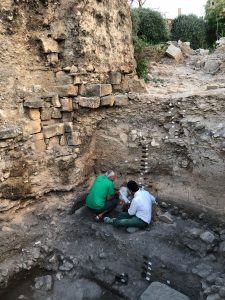The paleoenvironmental evolution of a Levantine coastal city in the Bronze Age. The case of Tyre (Lebanon). 2023-Ongoing
Dr. Francisco Jesús Núñez Calvo

The multidisciplinary Lebanese-Spanish-Polish project has been carrying out archaeological excavations in ‘The Acropolis’, located in the southern half of the ancient island, since 2015. This area was previously excavated by Amir M. Chehab and Dr. P. M. Bikai, uncovering a sequence covering from the foundation of Tyre in the Third Millennium BC to the present day. This work came to a hasty end with the outbreak of civil war in 1975.
The first phase of the new archaeological project identified and related the remains of the earlier excavations. The objective was to obtain a base from which to propose systematic excavations that would make it possible to demonstrate the evolution of Tyre in all its phases of occupation.
Of these remains, those from the medieval and Byzantine periods stand out, as well as the Roman city, with a new layout, monumental and including a temple. The pre-classical remains, greatly affected by Roman times’ constructions, are from the Late Bronze and Iron Ages and show that, until the arrival of Rome, this area was organized in terraces. However, evidence of earlier periods comes from a survey by M. Chehab. It produced levels from the Bronze Age, closed by a level of destruction that led to abandonment in the Middle Bronze Age. Then, there are several phases of the Late Bronze Age, a period that ended in a traumatic way with a tsunami recognized by geologists.
In this context, this project aims to analyze the soil samples and organic remains from a systematic collection of the aforementioned section to know the city’s paleoenvironment during the Bronze Age, its evolution, chronology, and contextualization within the ancient Levant.
